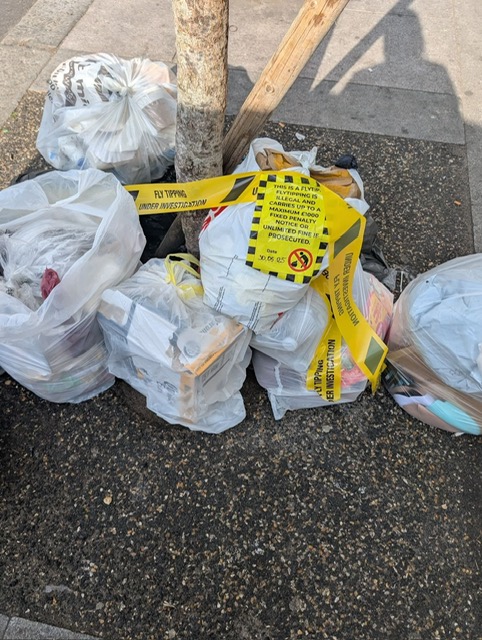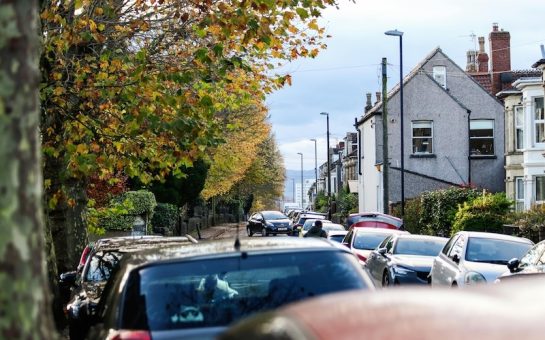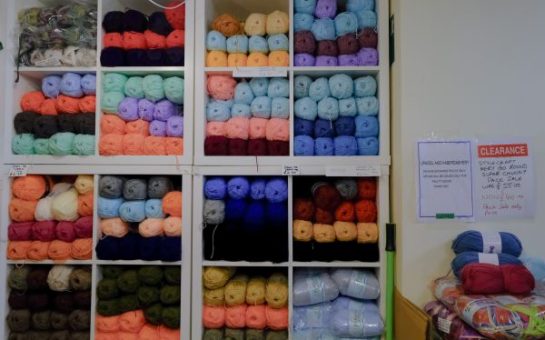Ealing Council has handed out more fly-tipping fines than any other London borough since the introduction of increased £1,000 fines.
Since the introduction of the higher fixed penalty notice (FPN) value on 9 May, the council has issued 343 FPNs for fly-tipping offences in the borough.
In 2024, Ealing handed out the fifth-highest amount of FPNs of any London borough, but the new crackdown saw them come in at number one across May and June this year.
Council leader Peter Mason said: “Fly-tipping damages our environment and our sense of community.
“We are committed to taking strong action against criminal wasters and our enforcement teams are working hard to investigate illegal dumping across the borough.
“Fly-tippers, you will be caught, and you will be fined.”

Alongside the increasing number of FPNs, the council also launched a campaign titled ‘this is our home, not a tip’.
The campaign enacts the council’s zero-tolerance approach by using their resources to tackle the issue more efficiently, as well as spreading awareness to tackle a lack of understanding of what fly-tipping is and the impacts it has on both the council and the community.
Despite not being among the boroughs with the highest number of reported incidents, Ealing recorded 12,242 incidents of fly-tipping this year to date.
Greener Ealing Ltd, the council’s rubbish and recycling contractor, works to collect as many fly-tips as possible, as quickly as it can.
Currently, 98% of reported fly-tips are collected within two working days.
Whilst Ealing council have historically been very efficient at picking up fly tips, chair of borough litter-picking group LAGER Can Cathy Swift believes this has reinforced a cycle of bad behaviour, as there is no punishment for the resident or awareness raised around the issue.
Swift said: “In some cases the resident has actually got no idea they’re doing anything wrong, I honestly don’t think that many residents even know that leaving a bag of rubbish next to a bin is fly-tipping.”
Another part of the campaign involves trialling a stickering and taping initiative in parts of the borough, intended to raise awareness amongst those residents who may not be aware that the manner in which they’re disposing of their waste constitutes fly-tipping.

This approach, which involves placing high-visibility stickers and tape on fly-tips, is replicative of one undertaken by Newham Council, and Keep Britain Tidy’s work in Newham in 2021, which cut fly-tipping in the area by 42% on average, and Swift hopes it will breed similar success.
She said: “We suggested the fly tip stickering and taping campaign quite a few years ago and we’re delighted that they’re trialling it.”
The council spends around £3million per year on clearing and disposing of this waste, an amount which would be enough to pay for 77 foster homes for children, the repair of 32,000 potholes or more than 4,000 weeks of support at a day care centre for a vulnerable adult.
The council also has to spend time and money working hard to identify offenders using evidence found in the dumped waste itself, CCTV footage and videos from witnesses to track down fly-tippers and issue fines.
As part of its awareness campaign, the council is calling on residents to use the resources available to dispose of rubbish correctly and free up the strain on council resources.
This includes using the council’s rubbish and recycling service from home on the correct collection day and disposing of waste via the Greenford Road Reuse and Recycling Centre.
Alongside the campaign, and fines, the council also works directly with residents and groups such as LAGER Can, which organises regular litter picks and reports fly-tips its members come across.
Ealing Council cabinet member for climate action Paul Driscoll said: “Our community takes pride in its streets and green spaces, and fly-tipping undermines that pride.
“We’re asking everyone to work together. Every report helps us track down offenders and keep our borough clean.”
Ealing residents can report incidents of fly-tipping via the Love Clean Streets app or the Ealing Council website.
Image credits: Ealing Council and Cathy Swift





Join the discussion